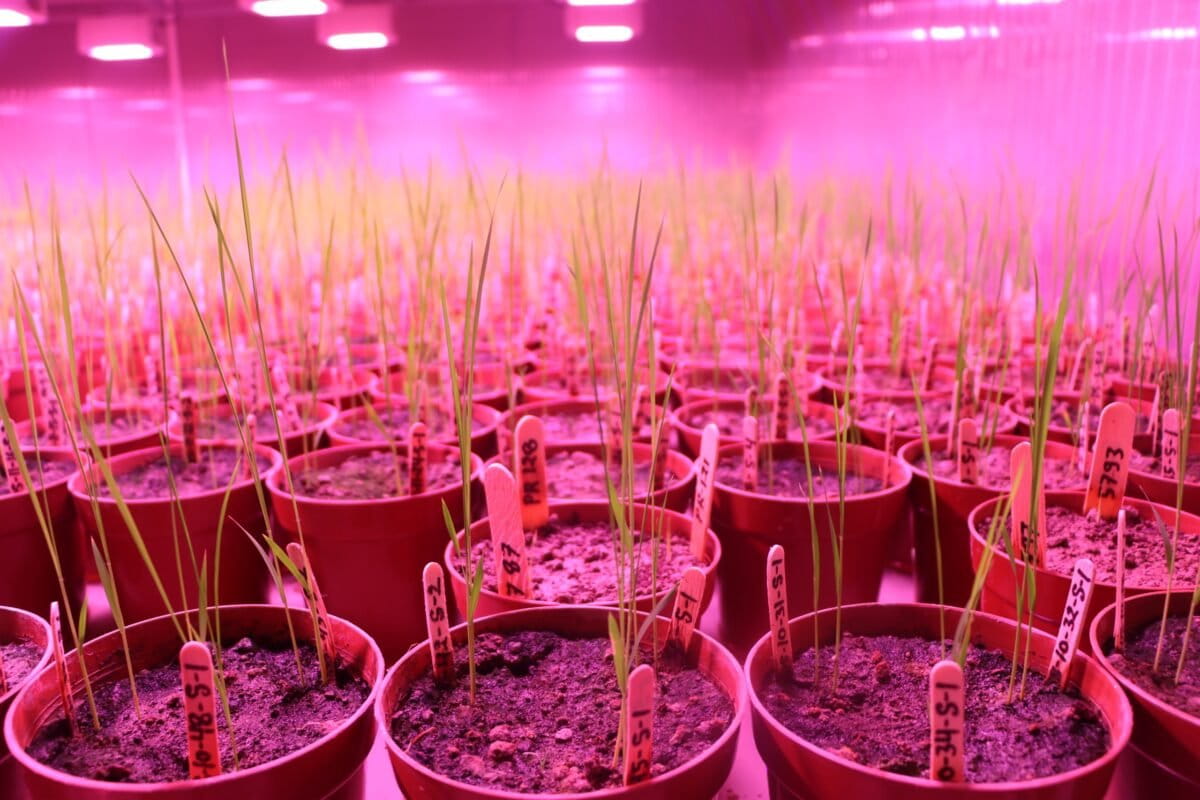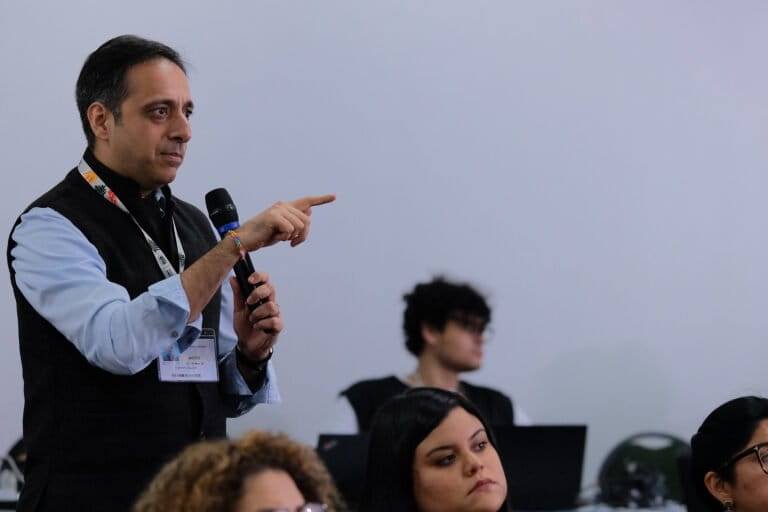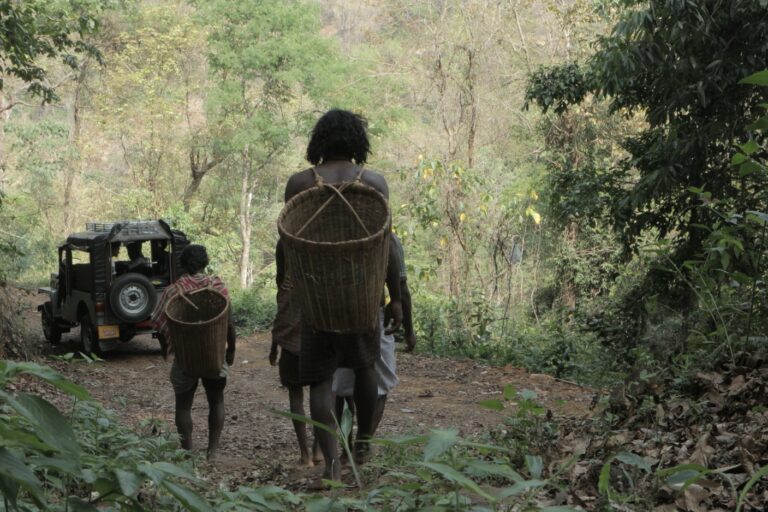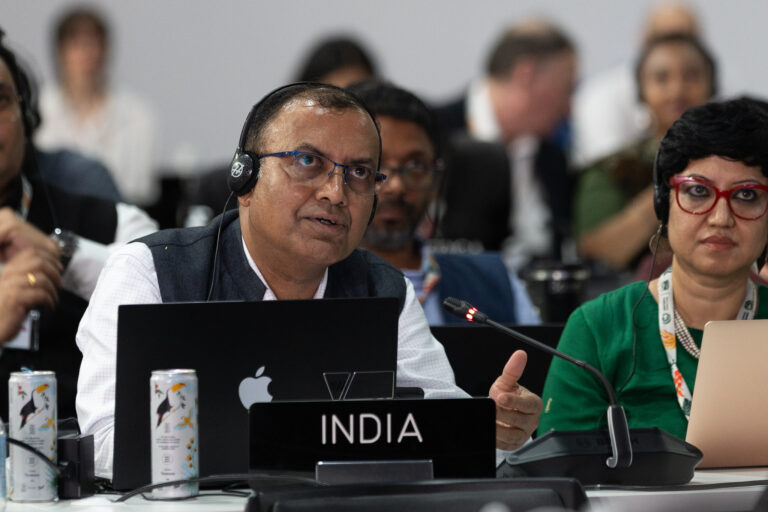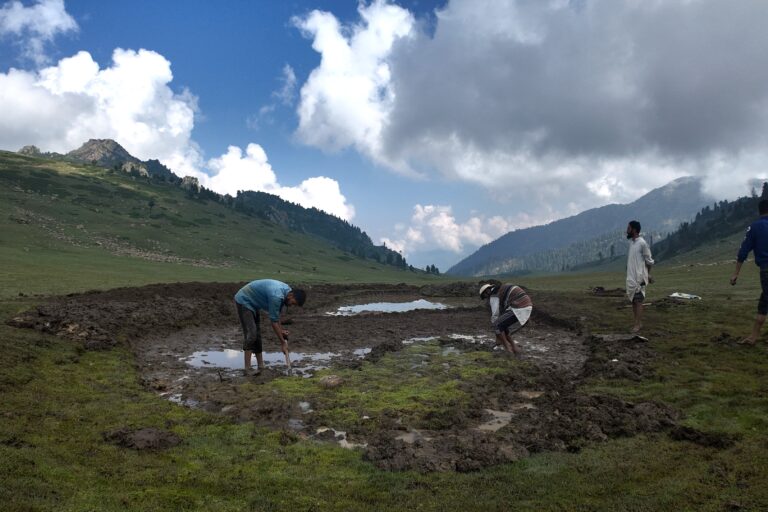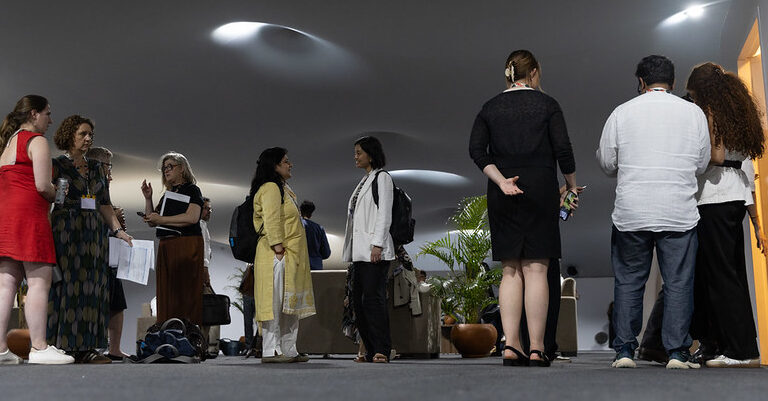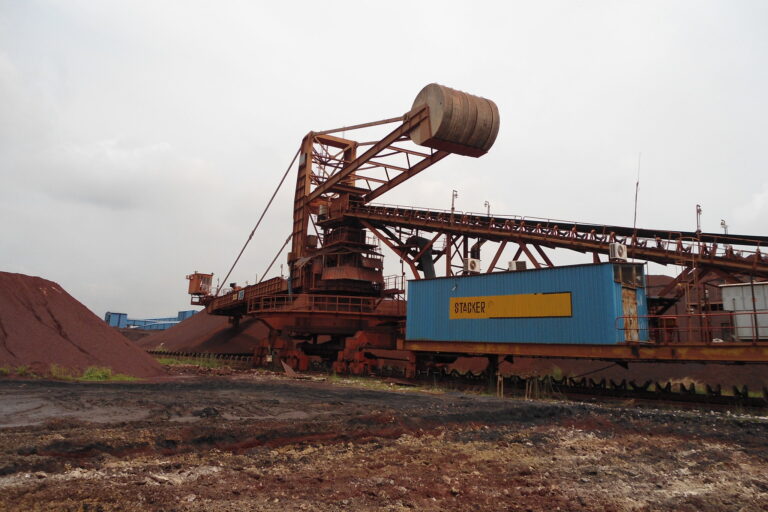- A new global assessment explores who is blocking action on climate change and how they are doing it through coordinated disinformation campaigns.
- Climate obstruction includes intentional actions to hinder science-backed climate policies, making it exponentially more difficult to tackle the impacts of human-caused climate change.
- Obstruction tactics are often subtle and context-specific, making it difficult to identify them in real time and even harder to counter effectively, the assessment finds.
- Regulations, litigation, public literacy and advocacy efforts are some of the solutions currently being worked on to counter climate obstruction.
Coordinated and intentional “obstruction” techniques are being used to delay or block climate policy implementation, a new global assessment spanning 49 countries, highlights.
The assessment notes that fewer people now publicly deny the existence, cause, and risks of climate change. Most actors involved in obstructing climate action focus on creating doubt about the severity of climate change, undermining climate solutions and policies, or making false claims about their products or businesses being sustainable.
Climate Obstruction: A Global Assessment, produced by Brown University’s Climate Social Science Network (CSSN), was released at the recently concluded COP30 amid rising concerns about lobbyists using UNFCCC procedures to sabotage climate action. About one in every 25 attendees at COP30 represented fossil fuel interests, which are major drivers of climate obstruction. At the same time, Edelman, a PR firm known for managing the reputations of major fossil fuel companies, led official communications for COP30 hosts, Brazil.
“We are failing to act on climate change because we did not anticipate and prepare for the obstruction… for those who would block and delay the transition that needs to happen for our species to survive,” said Timmons Roberts, a professor at Brown University and the executive director of the Climate Social Science Network, at the launch of the assessment on November 14. “We thought that good ideas, good technology, science, and good policy would lead the way, and people would just naturally make this transition. And we were wrong.”
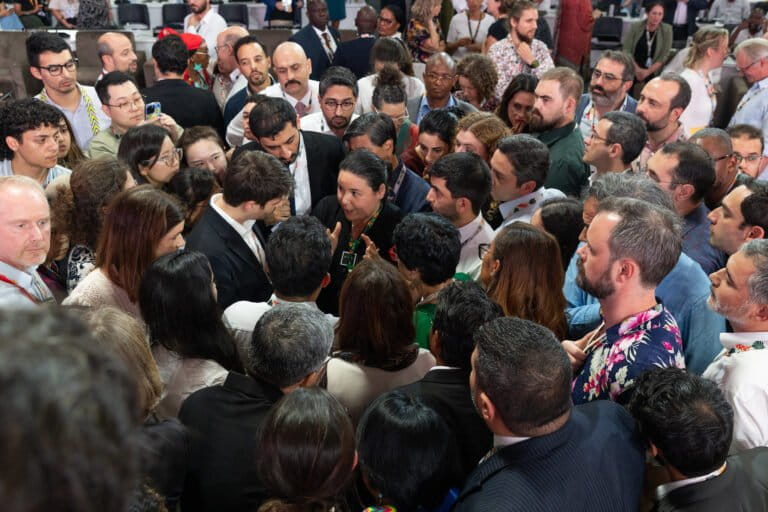
What climate obstruction looks like
In this landscape of organised influence and delay, a separate CSSN policy brief highlighted that understanding obstruction tactics is essential because effective climate governance depends on coordination. Released alongside COP30, the brief identifies 14 obstruction tactics used during UNFCCC negotiations. These range from overt tactics such as outright rejection of the conference text and undermining scientific consensus to less blatant ones such as procedural delay and, most subtly, laying ‘perfectionism-pragmatism traps’ that insist on flawless policy before action.
“Obstruction is often subtle and context-specific, making it difficult for negotiators, observers, and civil society to identify obstruction tactics in real time and even harder to counter effectively,” said the brief. Delay and dilution of climate action can weaken targets, reduce ambition for mitigation and adaptation, and cause overall erosion of trust in the negotiation process, it pointed out.
On similar lines, another analysis from the non-profit think tank InfluenceMap assessed anti-transition narratives circulated by the oil and gas industry in the run-up to COP30. It found that the companies and their industry associations have increased their use of misleading narratives on the energy transition by a third over the past year, since COP29. The analysis found that the fossil fuel industry’s main tactic is to stoke fears about energy affordability and security, primarily to reframe climate debates in its favour.
Tactics depend on context
Understanding obstruction also requires recognising how tactics manifest across different political and economic contexts. The tactics vary in the Global North and the South, in democracies and autocracies, or in low-income regions reliant on extractive industries and wealthy, diversified economies. “Similarly, obstruction is starkly different when undertaken by poor and powerless actors than when implemented by wealthy and powerful ones. The boundaries of what counts as obstruction, then, will be highly dependent upon who is taking the action, where the decision is taken and how it is justified,” the Climate Obstruction assessment said.
The assessment acknowledged that countries in the Global South are disproportionately vulnerable to the impacts of climate change. Balancing economic growth and human development with climate action is a dilemma for many low- and middle-income countries. However, it noted that some member countries of the Global South have used climate negotiation forums as a collective opportunity to stall mitigation measures.
The assessment describes how, at COP21 in Paris in 2015, India argued that less-developed countries like itself should be allowed high carbon emissions for economic growth, presenting its position as climate justice. “However, research on the Indian government’s actions at home show no evidence of prioritising the needs of economically poor and socially marginalised communities, whose lives have become more precarious over a quarter-century of steady economic growth that has increased domestic economic inequalities,” it noted.
“Defining climate obstruction as intentional actions or efforts to slow or oppose policies that are based on the best science available is key to differentiate between claims of climate justice and [climate] denial,” Carlos Milani, an international relations professor and co-author of the assessment, told Mongabay-India. “It is relevant to monitor contradictions and tensions between climate justice narratives (in diplomacy and multilateral negotiations, for example) and actual policies at the national level,” he said, adding that empirical research and field analyses are needed to make such a differentiation.
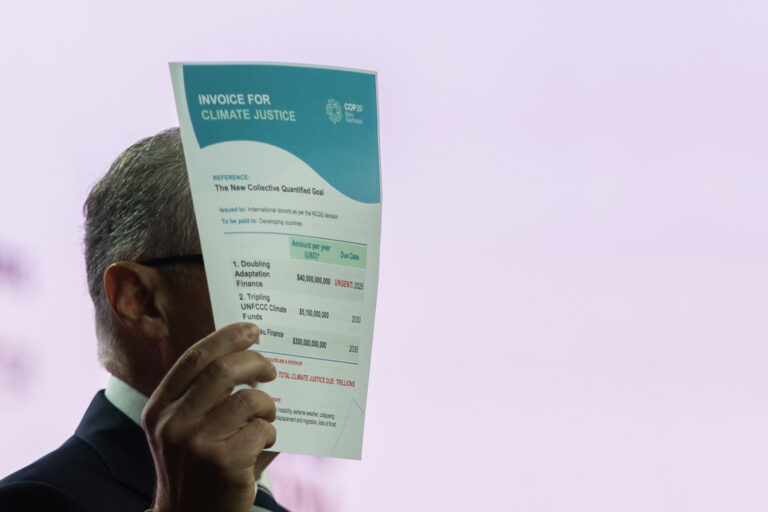
The assessment also points to evidence that industry lobbyists and business groups shape climate obstruction in some Global South countries. For instance, at the UN climate negotiations, industry perspectives that undermine or slow progress are often considered authoritative views, while “the demands and concerns of environmental and social activists, Indigenous peoples, and subnational actors attending these negotiations are typically ignored or weakened, thus also weakening their ability to influence the proceedings.” Industry and government views often align to protect polluting and extractive activities.
Talking about India specifically, the assessment said, “Although less-expensive renewable power has begun to undercut the price of coal-fired power, India ‘face[s] resistance from a coal lobby which controls vast budgets and employs millions’. The relationships and interests shared by industry lobbyists, business associations, and the state guide the narratives that play out in the UNFCCC negotiations.”
Reports in the Indian mainstream media also miss reflecting on India’s mitigation efforts by focussing on the climate justice positioning, the assessment finds. It notes that newspapers in particular frame climate responsibility as primarily the Global North’s burden, a narrative that highlights historical emissions and minimises India’s own contribution to greenhouse gas emissions.
Contemporary obstruction patterns echo a longer history
The roots of climate obstruction stretch back at least to the 1980s, starting in the U.S. when the American Petroleum Institute (API) began publicly downplaying the emerging threat of global warming. As research and investigation expanded, scholars also began identifying how obstruction evolved.
In 2020, the concept of “discourses of climate delay” was formally defined in a Global Sustainability article as an evolution of arguments used to discourage climate action. The study described these delay arguments as ones that accept climate change as real but justify weak or delayed action by tactics such as shifting responsibility, over-emphasising techno-fixes, fearing policy costs, or outright surrender to the impacts of climate change.
In recent years, these delay narratives are shifting primarily to online spaces, amplified by ad spending and platform algorithms.
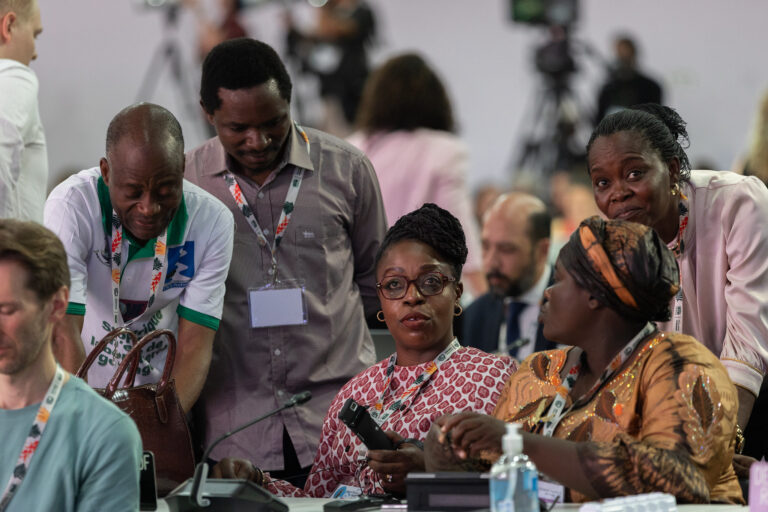
A 2024 report analysing YouTube videos of known climate deniers, observed a shift in their narratives from outright denial to a “new denial”. This new kind of denial misrepresents climate impacts and undermines climate science and solutions, said the report by the Center for Countering Digital Hate, which analysed thousands of video transcripts between 2018 and 2023. It found that in the face of increasing evidence of climate change, the deniers have shifted their narratives to delay tactics, specifically attacking the climate movement and advocates.
More recently, a pre-COP30 report by Climate Action Against Disinformation (CAAD) builds on four years of documenting climate disinformation and arrives at similar conclusions. The report states that “Big Carbon” (fossil fuel and large-scale agriculture) and “Big Tech” lobbies are driving an evolved wave of climate disinformation designed not to deny climate change, but to demoralise the majority who support action. CAAD, a coalition of organisations fighting climate disinformation, said in the report, “Big Carbon’s spending and Big Tech’s algorithms are preventing us from seeing and hearing one another online. Instead, we’re exposed to one lie after another; about race, about gender, about everything that can be used to cultivate a contrarian identity that rejects scientific expertise and accepts conspiracy theories as truth.”
“In 2025, climate disinformation isn’t used to make the public think climate change is a hoax, it’s used to make the majority of the public, who want climate action, to feel alone and powerless, and like they can’t demand action from their leaders,” the report said.
COP30 ends with promise to tackle disinformation
As COP30 wrapped up on November 23, negotiators placed information integrity in the final text, acknowledging the summit for bringing science, equity and political determination together and promoting accurate and consistent information, for action on climate change.
Dubbed the “COP of Truth”, COP30 launched a new Declaration on Information Integrity on Climate Change, committing governments to counter climate disinformation and support international cooperation to promote information integrity on climate change. Its impact, however, hinges on how many countries sign on. At the end of COP30, 18 countries, primarily European and Latin American countries, had endorsed it. The Initiative still needs support from many more countries, said Milani, when asked whether the Declaration will curb lobbying at future climate summits and encourage transparency. “More countries, including India, South Africa, for example, need to be part of it. The declaration is relevant because it brings climate disinformation to a COP agenda for the first time. Follow-up will also depend on future presidencies willing (or not) to put this item on the agenda.”
Experts say identifying obstruction tactics is only the first step; regulation, legislation, and government investigations must follow. Civil society, from NGOs to the media, will also be essential in supporting and amplifying efforts to curb obstruction, the CSSN assessment said.
“By enshrining information integrity in its cover text, COP30 has lighted the path for all future COPs,” Kate Cell, a senior campaign manager at the science advocacy group, Union of Concerned Scientists, said in a statement as COP30 closed. “There ARE steps we can and must take so that climate policy is aligned with science and human wellbeing, not with the interests of Big Oil, Big Ag, and their accomplices in Big Tech.”
Read more: India sharpens equity and finance demands as COP30 draft text raises new concerns
Banner image: Delegates speak informally before the start of closing plenary Image © UN Climate Change – Kiara Worth via Flickr (CC BY-NC-SA 4.0).




